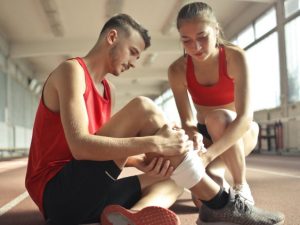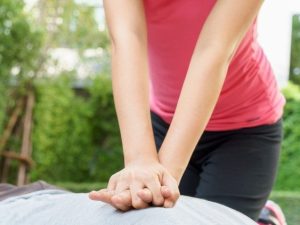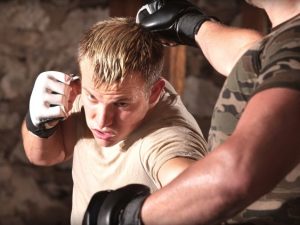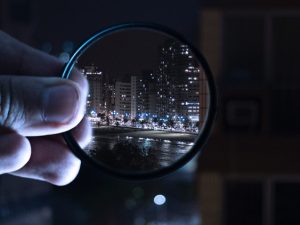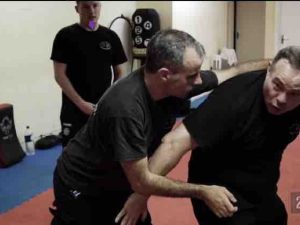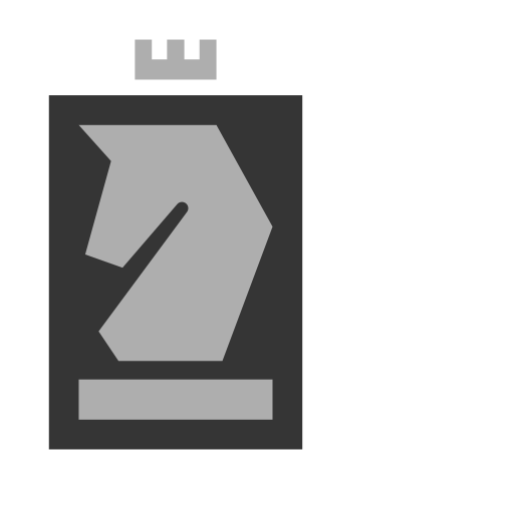The Ultimate First Aid Course
- Description
- Curriculum
- FAQ
- Reviews
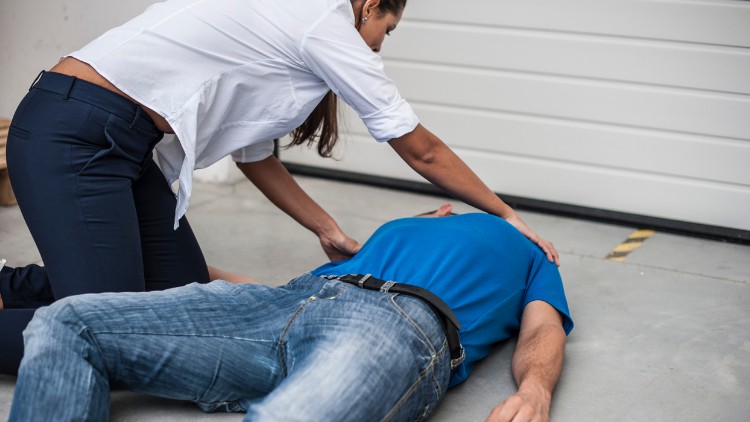
The Ultimate First Aid Training Course
This is a complete First Aid course designed to give you the knowledge of First Aid skills to support during first aid emergencies when someone is ill or injured. This course will cover First Aid Treatment for Adults, Children and Babies/Infants as well as a bonus section for your pet!
First aid is probably one of the most essential life skills that everyone should have. The knowledge of first aid can literally be the difference between life and death when a medical emergency occurs.
The course consists of videos that encourage you to practice the skills you are learning. There are numerous handouts you can download and keep for future reference as well as short tests to check your learning after various sections. We will keep you entertained and engaged throughout and will always be on hand to help answer any questions you have – just email [email protected] or use the Q&A section. The course is fully compatible with all computers and mobile devices. You will be able to stop and start as often as you like and on completion you will be able to print your Certificate.
Course content includes:
-
Understanding the role and responsibilities of the First Aider
-
Assessing an emergency situation
-
First aid for a casualty who is unresponsive and breathing normally
-
First Aid for a casualty who is unresponsive and not breathing (use of AED)
-
Treatment for a casualty suffering from a seizure
-
First Aid for a choking casualty
-
First Aid treatment for external bleeding, including treatment of shock
-
First Aid treatment of burns
-
First Aid to a casualty with bites, stings and minor injuries such as splinters.
-
First Aid to a casualty with animals bites, weaver fish, hairy caterpillars, jellyfish, snake bites.
-
Be able to conduct a secondary survey for a conscious casualty
-
Be able to treat a casualty who is drowning.
-
Treatment of injuries to the bones, muscles and joints.
-
First Aid treatment for suspected head and spinal injuries and soft tissue injuries
-
Treatment for chest injuries
-
First Aid treatment for a casualty with an eye injury
-
First Aid treatment to a casualty who has been poisoned or suffered anaphylaxis
-
First Aid treatment to a casualty who is suffering from the heat or the cold
-
Knowledge of how to provide first aid to a casualty who is suspected of a major illness such as Heart Attack, Stroke, Asthma, sickle cell, Diabetes or Epilepsy
-
Learn how to perform CPR on a pet
-
1Introduction
This course is designed to give you the theoretical knowledge as to what to do if you find someone unconscious, ill or injured. This course is also an excellent First Aid Training package for people to gain invaluable knowledge at their own time and pace.
The course consists of handouts and videos and a short test yourself section fully compatible with all computers and mobile devices. You will be able to stop and start as often as you like and on completion you will be able to print your Certificate.
It is impossible to cover all eventualities within this course, or to equip you with the knowledge and skills to appropriately diagnose and treat in unpredictable real life situations. If you suspect illness or injury, you should always seek immediate professional medical advice.
-
2What is a first aider?
In this video we will look at what your role is as a first aider and how to address the fears and concerns someone might have in the administration of first aid.
-
3Planning for an emergency
Always be prepared - make sure you have medical information on you or at the very least emergency contact details.
Have a look at the you tube video below on how to set up your medical ID on a iPhone as well as the PDF to help you and the relevant links for your phone.
-
4Task - Medical ID
-
5Contents of a First Aid Kit
First Aid kits come in all different shapes, sizes and colours. We will talk about the differences between your own personal first aid kit in comparison to a workplace first aid kit.
A First Aid Kit needs to be fit for your purpose.
-
6Minimising the risk of infection
In this video we will address the fear of infection. Especially in the current climate with COVID -19 still prevalent we need to ensure we as first aiders are kept safe. We will talk about how to minimise the risk of infection with appropriate PPE and hand washing.
-
7Task - Hand washing
-
8Hand washing
Learn how to wash your hands correctly , make sure you download the attached sheet and practice!
-
9The importance of communication skills
-
10Task - practical
-
11Calling the EMS and how to help when they arrive
Make sure you download the resources attached and also watch the external video on how to set up What 3 Words.
Learn how to call the EMS and what to tell them as well as how to prepare for their arrival.
Have a look at the attached resources to set up the text service for the EMS especially useful if you are hearing impaired (UK) and the silent 55 resource (useful if you can't speak).
-
12Conducting a scene survey
In this video you will learn how to stay safe in an emergency by considering the safety of the scene.
We will talk about checking the area for dangers and understanding why we need to talk to the casualty.
-
13Task - Practical
-
14The primary, secondary survey and recovery position
When you are watching this video we will be encouraging you to practice on yourself or on another (or maybe a teddy or pillow).
Download the resources attached to help you and remember to start and stop the video as often as you like.
Practice the recovery position on both sides - and if you have a casualty, ask them to be floppy and act like a sack of potatoes (if you let go of their hand they should just flop it back to the floor again)!
Practice makes perfect!
-
15An unconscious baby
-
16Task - Practical
-
17Test
-
33What is Choking
-
34Task - practical
-
35Choking Adult
Practical
With a family friend or family member practice the sequence for a adult / child and use the worksheet to help you.
Please DO NOT perform back slaps or abdominal thrusts on anyone alive because you can cause serious internal bleeding.
However practice the placements of the hands to you know how perform the back slaps and the abdominal thrusts.
Adult and Child
Give up to five back blows
Give up to five abdominal thrusts
Call EMS and repeat
-
36Choking Child
-
37Choking Baby
Practical
In order to practice the baby procedure, you can use a cushion or a doll.
Baby
Give up to five back blows
Give up to five chest thrusts
Call EMS can repeat
-
38Test
-
39Anaphylaxis
Information:
A severe allergic reaction of the body’s immune system. It causes chemicals to be released in the blood which widen the blood vessels and cause air passages to narrow. If someone is struggling to breathe they need their medication to relax the airways. The medication they need is an auto injectorpen. There are currently three types the market - the Jext, Epi pen and the new one on the market, the emerade pen. The Jext and Epi pen work the same way. The emerade is less confusing as it only has one end, the cap covers the needle.
Signs and Symptoms
Breathing becomes difficult
Blotchy patches on the skin
Swelling around the face
Feeling of terror
Treatment
999 instantly
Ask if they have an epi pen
Help the casualty sit in a comfortable position
Monitor vital signs until more qualified help arrives.
TASK: Watch the video and download the leaflets on how to use each pen
-
40Task - Download resources
-
41Asthma
TASK:
In order to feel what a asthma suffer feels like when they are having an attack, place a straw in your mouth and breathe in through your nose for 5 seconds and out through the straw for 2 seconds, repeat. How do you feel? You will probably feel some of the symptoms of a asthma sufferer. PLEASE STOP, DONT MAKE YOURSELF FEEL ILL.
INFORMATION:
The muscles of the air passages contract and go into spasm as a result making it difficult to breathe out.
Signs and Symptoms:
Difficulty in breathing
Wheezing
Difficulty in speaking
Coughing
Distress/anxiety
Blue tinge to lips
Treatment
Allow them to take their inhaler (the reliever - normally with blue caps)
Keep the chest open - shoulders back and down
Blow out for longer than in
Help the casualty use their inhaler and encourage the use of their spacer.
Things you should never do when someone is having an asthma attack:
Never leave them alone
Never take them to colder air
-
42Task - practical
-
43Test
-
46Types of bleeding
We will have a look at different types of bleeding.
-
47Treatment of bleeding
I will be encouraging you to take part in this exercise, so please ensure you have a bandage available or a substitute bandage such as a scarf.
-
48Task - Practical
-
49Embedded objects and when to seek help with a bleed
-
50Foreign objects in ears, nose and eyes
-
51Nose Bleeds
-
52Amputations
-
53Small cuts, blisters, splinters
-
54Shock and Fainting
In this video we will talk about Shock and Fainting
-
55Test
-
63Burns
-
64Burns and Scalds
In this video we will have a look at the different types of burns and scalds we could get. I will show you how to judge the severity of a burn and the correct treatment of burns.
Watch the video about the dangerous of button cell batteries - attached resource
Burns are one of the most common household injuries, especially among children. The term “burn” means more than the burning sensation associated with this injury. Burns are characterized by severe skin damage that causes the affected skin cells to die.
Most people can recover from burns without serious health consequences, depending on the cause and degree of injury. More serious burns require immediate emergency medical care to prevent complications and death.
LEVELS OF BURNS
There are three primary types of burns: first (superficial), second (Partial thickness)-, and third-degree (full thickness). Each degree is based on the severity of damage to the skin, with first-degree being the most minor and third-degree being the most severe. Damage includes:
First degree burns red, nonblistered skin
second-degree burns: blisters and some thickening of the skin
third-degree burns: widespread thickness with a white, leathery appearance
There are also fourth-degree burns. This type of burn includes all of the symptoms of a third-degree burn and also extends beyond the skin into tendons and bones.
Burns have a variety of causes, including:
scalding from hot, boiling liquids
Chemical burns
electrical burns
fires, including flames from matches, candles, and lighters
Sun exposure
The type of burn is not based on the cause of it. Scalding, for example, can cause all three burns, depending on how hot the liquid is and how long it stays in contact with the skin.
Chemical and electrical burns warrant immediate medical attention because they can affect the inside of the body, even if skin damage is minor.How to treat a burn
Treatment of burns
Run a burn under COOL running water for 20 minutes
Remove any jewellery that is NOT attached to the burns. Jewellery can restrict the blood flow
Cover with cling film to prevent infection. Seek medical help if the burn is on a baby or child, bigger than 1% of your skin surface area, deep and on the face, hands, feet and genitals.
Preventing burns
The obvious best way to fight burns is to prevent them from happening. Certain jobs put you at a greater risk for burns, but the fact is that most burns happen at home. Infants and young children are the most vulnerable to burns. Preventive measures you can take at home include:
Keep children out of the kitchen while cooking.
Turn pot handles toward the back of the stove.
Place a fire extinguisher in or near the kitchen.
Test smoke detectors once a month.
Replace smoke detectors every 10 years.
Keep water heater temperature under 120 degrees Fahrenheit.
Measure bath water temperature before use.
Lock up matches and lighters.
Install electrical outlet covers.
Check and discard electrical cords with exposed wires.
Keep chemicals out of reach, and wear gloves during chemical use.
Wear sunscreen every day, and avoid peak sunlight.
Ensure all smoking products are stubbed out completely.
Clean out dryer lint traps regularly.
It’s also important to have a fire escape plan and to practice it with your family once a month. In the event of a fire, make sure to crawl underneath smoke. This will minimize the risk of passing out and becoming trapped in a fire.
-
65Button cell batteries
-
66Electrical Care
-
67Test
-
68Sprains and Strains
-
69Task - Practical
-
70Fractues
TASK:
Watch the video and download the attached resource and practice both the support sling and elevation sling using a triangular bandage if you have one or make your own out of a pillow case.
Make sure you practice both sides.
INFORMATION
There are different types of fractures:
Closed Fractures
Open Fractures
Complicated Fractures
Greenstick Fractures
What to look for - Broken bones and fractures
The seven things to look for are:
1. Swelling
2. Difficulty moving
3. Movement in an unnatural direction
4. A limb that looks shorter, twisted or bent
5. A grating noise or feeling
6. Loss of strength
7. Shock
What you need to do - Broken bones and fractures
• If it is an open fracture, cover the wound with a sterile dressing and secure it with a bandage. Apply pressure around the wound to control any bleeding.
• Support the injured body part to stop it from moving. This should ease any pain and prevent any further damage.
• Once you’ve done this, call 999 or 112 for medical help. While waiting for help to arrive, don’t move them unless they’re in immediate danger.
Waiting for medical help to arrive
Protect the injured area by using bandages to secure it to an uninjured part of the body to stop it from moving. For example, fractures on the arm can be secured with a sling, and a leg with a fracture can be tied to the uninjured leg.
Keep checking the casualty for signs of shock This does not mean emotional shock, but is a life-threatening condition, often caused by losing blood.
If they lose responsiveness at any point, open their airway, check their breathing and prepare to treat someone who’s become unresponsive
-
71Head injuries
-
72Spinal Injuries
I will address the signs and symptoms of a spinal injury and explain the treatment
-
73Spinal recovery position
In this video we will show you how to perform the spinal recovery position and recap the log roll from the previous spinal injury video,
Task:
If you have a helper or helpers available please practice the spinal recovery position. When you have mastered it, apply the Primary Survey and Secondary Survey to it (from previous videos).
Recap: Primary Survey - Danger, Response, Airway, Breathing check
Secondary Survey: Check body for injuries
-
74Test
-
77Strokes
-
78Diabetes
-
79Meningitis
-
80Sickle Cell
In this video I will explain what sickle cell is and the importance of following a care plan.
-
81Poisoning
In this video we look at poisons from household cleaners, tablets plants, berries and food. We will address how to identify is someone is poisoned and how to help them
-
82Test


